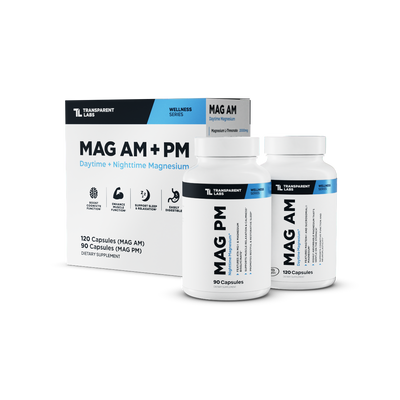The Beginner's Guide to German Volume Training (10x10 method)

Everything You Need to Know About German Volume Training
Have you hit a plateau in your strength gains? You’re not alone. So many long-time weightlifters have found themselves in this exact position.
It seems as though no matter how often you hit the gym or how much protein you consume, you can’t seem to build any more muscle!
If this sounds like you, we’ve got just the training program to try.
Read on as we explore the concept of German volume training, how it can trigger fast-paced muscle hypertrophy, and what you need to know before you begin this new training protocol.
What Is German Volume Training?
German volume training (GVT), also known as the "Ten Sets Method" or “10x10 workout,” is a popular form of weight training created and popularized by the late Charles Poliquin, a Canadian strength coach, author, and fitness instructor. The GVT method entails doing ten sets of ten reps for ten exercises. Using extensive volume in repeated efforts, this program is intended to maximize strength and hypertrophy gains in a targeted muscle group.
What sets German volume training apart from most other strength-based programs is the use of high volume (i.e. high reps with moderate sets) to target a group of motor units during a single exercise. Over the course of a few months, the German volume training routine can create extraordinary stress on the body, causing fast-paced muscle growth.
Due to the immense fatigue accumulated during a single training session, German volume training is recommended for experienced lifters looking to overcome any physiological plateaus keeping them from gaining muscle mass.
Benefits of German Volume Training
Due to the high volume, repetitive nature of this workout, the German volume training program is one of the very best for triggering muscle growth and lean muscle mass development in a shorter period of time.
There are two reasons why this occurs:
1. High Training Volume
As mentioned before, GVT is a high volume training program that is shown to stimulate muscle adaption by focusing more on how much you train (sets and reps) rather than how heavy you lift (load or intensity). Recent studies have found that this type of training is directly related to increases in muscle hypertrophy in both trained and untrained populations [1].
2. Longer Eccentric Phase
As for the training tempo, one of the best ways to optimize muscle growth is by lengthening the eccentric loading phase. Increasing the time your muscles are under tension can trigger a progressive activation of the genes responsible for cellular growth and development [2].
This training method utilizes a 4-0-2-0 lifting tempo. In other words, GVT requires lifters to take 4 seconds during their eccentric/lowering phase, followed by 0 seconds of stoppage time at the bottom of the lift, 2 seconds during their concentric/lifting phase, and 0 seconds of stoppage time at the top of the lift.
Although the GVT program calls for 10 sets of each exercise, you may also see benefits in doing fewer sets. This is known as the modified GVT style – more on this in a moment!
How To Use German Volume Training

So, now that we know what German volume training actually is, it’s time to discuss how to use it.
To help you avoid overtraining your muscles with this high volume, it’s important to start with a weight of roughly 60% of your one rep max (1RM). Though the first couple of sets may not feel challenging, the idea is not to work to failure, but instead, to allow the accumulation of sets to cause muscle fatigue by the time you reach 10 sets.
Within a single exercise, the GVT method is designed to accumulate a high number of sets and reps to help fatigue one or more muscle groups at a time. Due to the increased metabolic stress of this exercise program, it’s important to opt for a mixture of upper-body and lower-body compound exercises to help maximize muscle recruitment.
Though it is possible to use isolated exercises, you may need to drop your 1RM down to 40-50% to accommodate for a reduced motor unit recruitment [3].
By the end of a workout, your muscles are likely to be incredibly stressed with relatively high amounts of muscular damage. For this reason, it’s important to only train 1-2 exercises per muscle group per week.
German Volume Training Program Design
Most GVT programs are designed with 5-10 exercises in one week, split into the following 5-day rotation:
-
Day 1: Chest and Back
-
Day 2: Legs and Abs
-
Day 3: Rest
-
Day 4: Arms and Shoulders
-
Day 5: Rest
During a single training session, you will superset 1-2 exercises per muscle group followed by a rest interval. A superset refers to the switching back and forth between two different exercises one after the next [4].
Here is a sample GVT program for day 1:
-
Chest Exercise #1: declined bench press (10 sets x 10 reps x 60% of 1RM)
-
Back Exercise #1: lat pulldowns (10 sets x 10 reps x 60% of 1RM)
-
Chest Exercise #2: inclined bench flys (10 sets x 10 reps x 60% of 1RM)
-
Back Exercise #2: dumbbell rows (10 sets x 10 reps x 60% of 1RM)
Between every set, you will take 60-90 second rest periods before switching to your next set. Remember, the first set should be easy while the final 2-3 sets should be extremely challenging. You can vary which exercises you perform on different days, so long as you use the same amount of weight for each set.
German Volume Training Variations
There are a couple of popular German volume training variations that can help create similar muscle growth adaptations as the original GVT method.
1. Advanced German Volume Training
This advanced program is designed in a similar fashion to the regular GVT routine. However, the main difference here is that rather than performing 10x10, you will drop your load down to 6 reps per set at about 70-80% of your 1RM. Another key difference in the advanced techniques is that you will be performing each rep at a tempo of 4-0-1-0, with less time focusing on concentric loading.
This method helps you accommodate heavier weights across the same muscle group, which may be effective in enhancing muscle strength and hypertrophy gains.
2. Modified German Volume Training
The modified GVT is an excellent stepping stone once you've surpassed beginner and intermediate exercise methods.
The key difference here is that modified GVT requires a lower set count. Rather than the 10x10 rule, this method is typically done using 5 sets of 10 repetitions. Research has found that a drop in sets can help induce significant muscle strength gains without causing overtraining [5].
Key Takeaways
German volume training is a challenging program that's used by experienced lifters to help promote fast-paced muscle growth. Using several big compound lifts at a volume of 10x10, GVT has proven to be a difficult workout routine with the potential for exceptional long-term training results.









